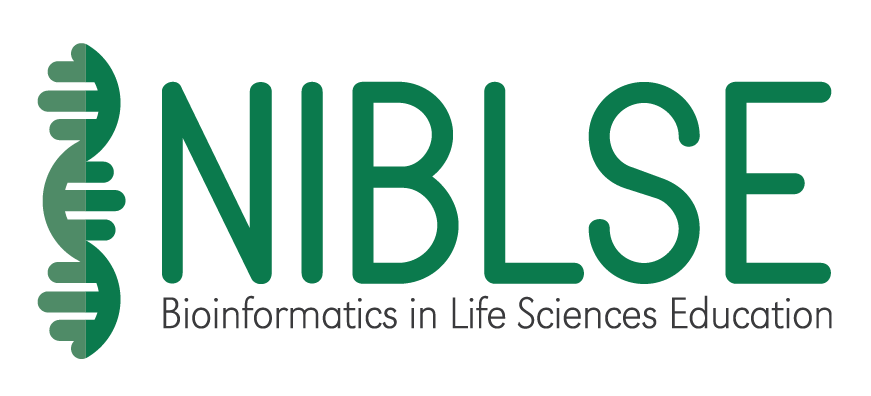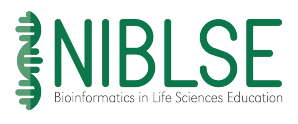NIBLSE Newsletter
December 2018
Greetings from NIBLSE!

NIBLSE is an NSF-funded Research Coordination Network that facilitates the integration of bioinformatics into life science curricula. The NIBLSE network currently has 118 formal members representing a diverse set of higher education institutions. The network has established infrastructure and resources to support integration of bioinformatics exercises, modules and courses. We seek to expand our membership and support faculty who share our mission and goals.
Get Involved in the NIBLSE Faculty Mentoring Network (FMN)
Four NIBLSE members will lead an FMN in Spring 2019. FMNs are collaborative groups of faculty, led by faculty experts, that work together to implement educational resources. In the NIBLSE FMN we are seeking a collaborative group that will implement and adapt a specific bioinformatics resource from the NIBLSE Resource Collection. The Sequence Similarity resource that will be the subject of the FMN will introduce students to essential, and critically important bioinformatics concepts and competencies including tools and algorithms that accomplish multiple sequence alignment, BLAST, and generation of phylograms. This resource will include both guided inquiry modules and open-ended inquiry modules. FMNs have been extremely successful in many areas of quantitative biology. NIBLSE is excited about this opportunity to partner with QUBES in sponsoring this FMN. Find more information about the NIBLSE FMN as well as an application link here.

Save the Date for the Second NIBLSE Conference!
Many NIBLSE members will remember the productive NIBLSE conference in Omaha, Nebraska in 2016. How often do you get to experience a baby tornado while riding in an open trolley en route to dinner at a world-class zoo? While we cannot promise another baby tornado, the next conference in Omaha will feature a unique meeting venue called the hot shops, where a community of sculptors, painters, glass blowers and other artists will be actively working around us. The meeting will be October 10-11, 2019. NIBLSE will provide travel support for attendees. More information will be available soon, but for now, save the date.
The NIBLSE Mission
The long-tern goal of NIBLSE is to achieve the full integration of bioinformatics into undergraduate life sciences education.
Specific activities are:
1. Establish a permanent network of investigators.
2. Collaboratively identify, vet, and refine a set of bioinformatics core competencies.
3. Identify and vet assessment tools.
4. Organize and simplify the dissemination of materials.
NIBLSE Membership has increased 45% in 4 months to 118 members
Interest in integrating bioinformatics into life science curricula is clearly growing. NIBLSE is here to support that interest, but we need your help! We will accomplish our common goals only when our members are actively contributing their expertise and sharing their experiences. For example, we have two active committees: Resource Review Committee and Assessment and Validation Committee. We would love to have new voices on our committees. Please see the information here to learn more about those opportunities and more.

Sequence Similarity Resource Featured as Resource of the Week (ROW)
QUBES features a different learning resource each week. Last week, the featured ROW is the Sequence Similarity resource that is the subject of the upcoming NIBLSE FMN (see above). This laboratory module, leads introductory biology students in the exploration of a basic set of bioinformatics concepts and tools. The exercise utilizes simple paper models to help students understand matrices and algorithms prior to use of web-based computational tools. Students start the module by defining sequence similarity and then investigating how similarity can be quantitatively compared between two similar length proteins using a BLOSUM scoring matrix. Students then consider finding local regions of similarity between a sequence query and subjects within a large database using BLAST. Lastly, students practice accessing FASTA formatted sequence information via NCBI databases as they collect sequences for a multiple sequence alignment in order to generate a phylogenetic tree. A direct link to the sequence similarity ROW is here. All ROWs are available here.

Many Thanks to QUBES

NIBLSE is proud to be one of the first organizations to partner with the outstanding people at QUBES. We have recently made the NIBLSE-QUBES partnership even closer. Please explore all of the excellent opportunities, resources, and information available at QUBES.
